
An orange snake stands out with its striking hues and unique patterns, making it one of the most beautiful reptiles in the wild. From forest floors to deserts, these snakes use their bright coloring for camouflage or warning.
Advertisement

An orange snake stands out with its striking hues and unique patterns, making it one of the most beautiful reptiles in the wild. From forest floors to deserts, these snakes use their bright coloring for camouflage or warning.
Advertisement
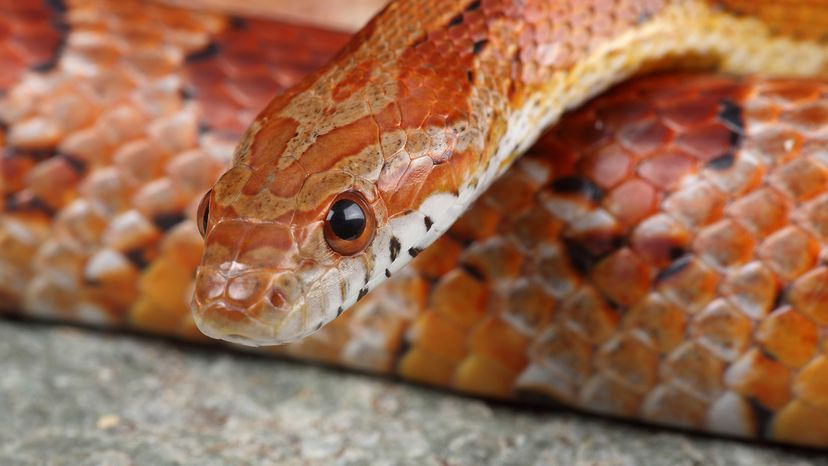
Corn snakes (Pantherophis guttatus), also called red rat snakes, are native to the eastern United States. In the wild, these snakes often have orange or reddish-brown bodies with distinctive black and white marks on their backs.
These snakes thrive in various environments, including forests and fields, and even enter abandoned buildings to hunt rodents. Red rat snakes are excellent climbers and often hide in rodent burrows or under loose bark.
Advertisement
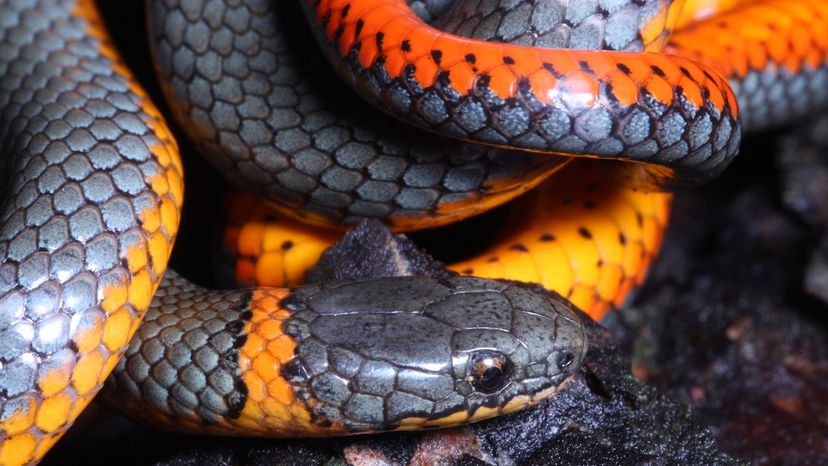
The ring-necked snake (Diadophis punctatus) is a small, secretive species with a bright orange or yellow ring around its neck. Their bellies often feature orange coloration, and they primarily feed on tree frogs, salamanders and small invertebrates.
The ring-necked snake lives in various regions of North America, particularly in the eastern United States. You'll typically find these snakes under rocks, logs and loose bark in moist environments. Their striking color makes them easy to identify despite their small size.
Advertisement
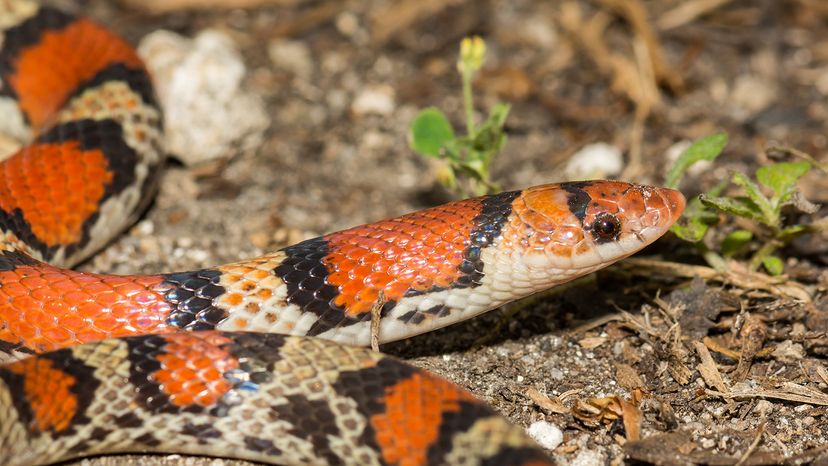
The scarlet snake (Cemophora coccinea) has red, black and yellow or white bands running down its body, making it resemble the venomous coral snake. Its bands can appear as a vibrant reddish-orange in some reptiles.
This snake prefers sandy or forested habitats and spends much of its time hiding under logs or debris. Like the corn snake, it is a nonvenomous species and hunts for small rodents and reptile eggs.
Advertisement
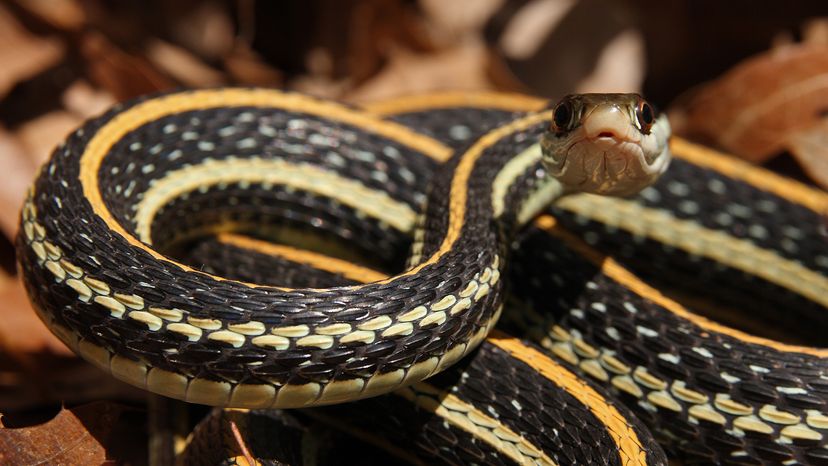
The orange-striped ribbon snake (Thamnophis proximus proximus) is a slender, nonvenomous snake that often spend time around water sources like ponds, streams and marshes. It has a distinctive orange stripe running down the length of its back, with darker stripes flanking it.
This snake is common in the southeastern United States and feeds primarily on amphibians and small fish. Its quick, agile movements and bright coloring make it an impressive predator in its habitat.
Advertisement
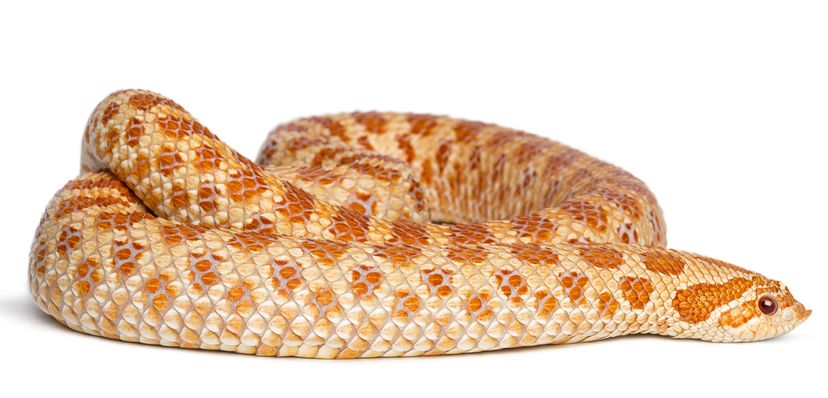
The western hognose snake (Heterodon nasicus) is a small, burrowing snake that often displays a rusty orange or brownish hue along its back, which may include darker blotches. Found throughout the U.S., this snake is famous for its "play dead" defense mechanism.
Its diet consists mainly of amphibians, and it uses its upturned snout to dig into sandy soils in search of prey. Its toxic saliva can help them hunt their prey, but they pose no threat to humans.
Advertisement
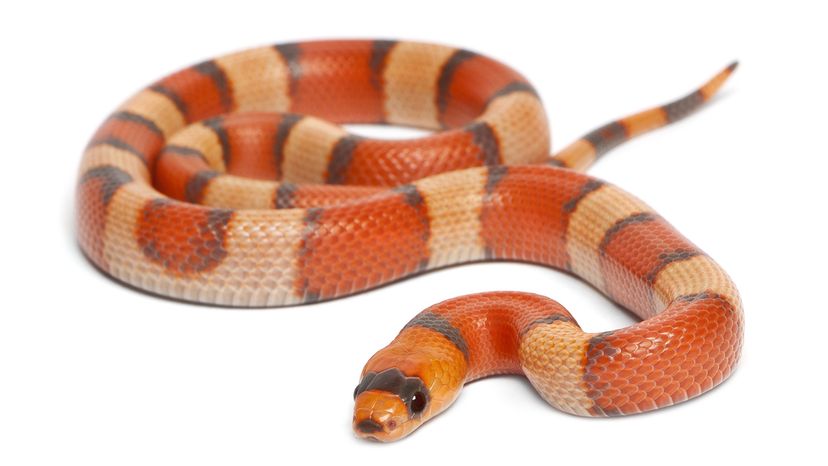
The Honduran milk snake (Lampropeltis triangulum hondurensis) has beautiful reddish-orange bands mixed with black and white patterns. It commonly inhabits tropical rainforests and is excellent at controlling rodent populations. Their bright orange and red patterns help them blend into fallen leaves, making it harder for predators to spot them.
Advertisement

The African bush viper (Atheris squamigera) comes in various colors, including a stunning orange hue. This venomous species is native to the forests of central Africa. It has rough, keeled scales that give it a unique appearance.
This viper spends much of its time in trees, hunting small mammals, birds and amphibians. Though its orange coloration is striking, it helps the snake blend into the dappled light of the forest canopy.
Advertisement
We created this article in conjunction with AI technology, then made sure it was edited and fact-checked by a HowStuffWorks editor.
Please copy/paste the following text to properly cite this HowStuffWorks.com article:
Advertisement